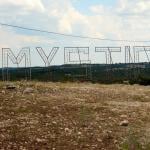Atheist anti-theist and “philosopher” Jonathan M. S. Pearce runs the blog, A Tippling Philosopher. He has encouraged me to visit his site and offer critiques, and wrote under a post dated 12-14-21: “I even need to thank the naysayers. Some of them have put up with a lot of robust pushback and still they come. Bravery or stupidity – it’s a fine line. But they are committed, and there is something to be said for taking that commitment into the lion’s den. Dave, you are welcome at my new place. Come challenge me. . . . thanks for your critiques of my pieces. Sorry I couldn’t get to more of them.” This echoes his words about me in a post dated 7-20-17, where he said, “well done . . . for coming here and suffering the slings and arrows of atheists’ wrath. . . . I commend him for getting involved and defending himself. Goodonya, mate.”
Under a post dated 1-27-22, he stated: “I do welcome disagreements because I don’t want [my blog] to [be] just an echo chamber. . . . [S]omeone like Armstrong does give me ammunition for some of my pieces!” Likewise, on 3-18-14 he proclaimed: “Dissenting views are utterly vital to being sure that you are warranted in your own beliefs and views.” And on 7-20-17: “I put my ideas and theories about the world out there for people to criticise. . . . I want to make damned sure that they are warranted. I can’t stand the idea that I could . . . believe something that is properly unwarranted. . . . What’s the point in self-delusion? . . . I put something out there, people attack it, and if it still stands, it’s pretty robust and I am happy to hold it. If not, I adapt and change my views accordingly.”
I’m delighted to oblige his wish to receive critiques and dissenting views! The rarity of his counter-replies, however, is an oddity and curiosity in light of this desire. He wrote, for example, on 11-22-19: “[I can’t be] someone who genuinely is not interested in finding out the truth about philosophy, God and everything. If I come up against any point that is even remotely problematic to my worldview, I feel the absolute necessity to bottom it out. I need to reconcile at least something; I have work to do. I cannot simply leave it as it is. . . . I would simply have to counter the arguments, or change my position.” Whatever; this hasn’t been my experience with him; only in short and infrequent spurts. I continue to offer them in any event, because they aren’t just for his sake.
Here’s what he thinks (by the way) of Jesus: “The Jesus as reported in the Gospels is so far removed from the real and historical figure of Jesus, overlaid with myth, story-telling, propaganda and evangelist agenda, that the end result is synonymous with myth. . . . I’d take mythicism over Christianity any day. And they call mythicists fringe as if the position is absurd? Now that’s crazy.” (8-2-14)
Jonathan’s words will be in blue.
*****
First, I reply to a portion of Jonathan’s article, “The hoops the Christian has to jump through to believe the Nativity” (10-29-12):
In my book, The Nativity: A Critical Examination, I think I give ample evidence that allows one to conclude that the historicity of the nativity accounts is sorely and surely challenged. All of the aspects and claims, that is. There are problems, for sure, if one accepts that some claims are false but others are true. But the simple fact of the matter is that all of the claims are highly questionable.
Here are the hoops that a Christian must jump through. They are flaming hoops, and the Christian can do nothing to avoid being burnt, it seems. From my book:
In order for the Christian who believes that both accounts are factually true to uphold that faithful decree, the following steps must take place. The believer must: . . .
• Believe that, despite archaeological evidence, Nazareth existed as a proper settlement at the time of Jesus’ birth.
Nazareth was a very small town when Jesus was born. When my wife and I visited there in 2014, our tour guide told us that it was scarcely as large as the parking lot of the Church of the Annunciation there. But it’s been excavated to the time of Jesus.
Skeptics (like Jonathan) for many years have asserted that Nazareth didn’t exist at all in His time. Their judgments are premature and erroneous, as usual. Amanda Borschel-Dan, reporter for The Times of Israel, wrote an article about this topic and the latest archaeology:
Nazareth. . . as British-Israeli archaeologist Yardenna Alexandre notes . . .,the once small village with huge name recognition existed well before and well after [Jesus’] lifetime. . . .
Among her digs, in 2009, Alexandre discovered the first example of a residential building from the time of Jesus. It was found near today’s Church of the Annunciation, . . . In her report, Alexandre describes the structure as “a simple house comprising small rooms and an inner courtyard was inhabited in the late Hellenistic and the Early Roman periods [late 2nd c. BC to early or mid 2nd c. AD].” . . .
Among the artifacts is a coin of Emperor Claudius that was uncovered on the floor of a corridor that led into a three-story pit complex. According to the report, “The coin was minted in ‘Akko-Ptolemais in 50–51 CE. (“What do we know about Nazareth in Jesus’ time? An archaeologist explains”, The Times of Israel, 22 July 2020)
Here is also my reply to the relevant portion of Jonathan’s article, “Jesus the “Nazarene”: More Prophecy Debate” (12-18-20).
I went to Raymond Brown, the famous Catholic exegete whom I highly rate (all quotes from The Birth of the Messiah, 1977, London: Geoffrey Chapman). . . . He also accepts that no mention of Nazareth exists in pre-Christian writings (p. 207) and so it would be odd for a place that seems not to have existed yet to fits coherently into an OT prophecy. This also coheres with Rene Salm’s thesis in The Myth of Nazareth: The Invented Town of Jesus that Nazareth did not exist at the time of Jesus, according to archaeological analysis, and not until at least 70 CE.
Really? That would come as big news to the folks described in this article: “New archaeological evidence from Nazareth reveals religious and political environment in era of Jesus” (David Keys, Independent, 4-17-20). They actually do science, rather than sit in armchairs and make historically and archaeologically clueless remarks about towns and people like Jesus not existing or never existing:
[T]he archaeological investigation revealed that in Nazareth itself, in the middle of the first century AD, anti-Roman rebels created a sizeable network of underground hiding places and tunnels underneath the town – big enough to shelter at least 100 people. . . .
The new archaeological investigation – the largest ever carried out into Roman period Nazareth – has revealed that Jesus’s hometown is likely to have been considerably bigger than previously thought. It probably had a population of up to 1,000 (rather than just being a small-to-medium sized village of 100-500, as previously thought).
“Our new investigation has transformed archaeological knowledge of Roman Nazareth,” said Dr Dark, who has just published the results of his research in a new book Roman-Period and Byzantine Nazareth and its Hinterland. . . .
The newly emerging picture of Roman-period Nazareth as a place of substantial religiosity does, however, resonate not only with the emergence of its most famous son, Jesus, but also with the fact that, in the mid-first or second century, it was chosen as the official residence of one of the high priests of the by-then-destroyed Temple in Jerusalem, when all 24 of those Jewish religious leaders were driven into exile in Galilee.
See also: “Did First-Century Nazareth Exist?” (Bryan Windle, Bible Archaeology Report, 8-9-18), “Archaeologists: Jesus-Era House Found In Nazareth” (NPR, 12-21-09); also several related articles from a Google search. Did it exist before Jesus’ time? It looks like it did:
The Franciscan priest Bellarmino Bagatti, “Director of Christian Archaeology”, carried out extensive excavation of this “Venerated Area” from 1955 to 1965. Fr. Bagatti uncovered pottery dating from the Middle Bronze Age (2200 to 1500 BC) and ceramics, silos and grinding mills from the Iron Age (1500 to 586 BC) which indicated substantial settlement in the Nazareth basin at that time. (Wikipedia, “Nazareth”)
That’s science. Sorry to disappoint! Jonathan then goes on to describe several more of the numerous possibly hypotheses of Fr. Raymond Brown. He has many theories; so do many others. Archaeology, in contrast, deals with ascertainable historical facts of settlement and other evidences of human presence, based on concrete artifacts.
If you take into account Salm’s whole thesis (which you don’t have to go that far), it didn’t even exist at the time of Jesus (work that wasn’t available to Brown in his life, and was followed up in 2015 with NazarethGate: Quack Archeology, Holy Hoaxes, and the Invented Town of Jesus). I also genuinely find some of the arguments more forceful (such as quoted from Brown above). . . . (since it is a real squeeze to even get archaeology that supports it existing in Jesus’ time).
Take that up with the folks doing the latest “digs” going on in Nazareth now. I go with current science, not desperate atheist myths, made up on the fly (or any fringe Christian conspiracist myths, either).
The Jerusalem Post published an article, “Have archaeologists found Jesus’s childhood home in Nazareth?” (Hannah Brown, 11-27-20):
The location of the home where Jesus, Mary and Joseph lived in Nazareth when Jesus was a child may have been discovered by Prof. Ken Dark of the University of Reading in England, according to research Dark wrote about in his recently published book, The Sisters of Nazareth Convent: A Roman-period, Byzantine, and Crusader site in central Nazareth, which is available from Routledge Press.
Dark, who has spent more than a decade studying the first century ruins that are underneath a modern-day convent, said this spot was first suggested as the home of Jesus and his family in the 19th century but that archaeologists in the 1930s did not find the idea credible.*However, the professor was intrigued and launched a project to explore the site 14 years ago. “I didn’t go to Nazareth to find the house of Jesus, I was actually doing a study of the city’s history as a Byzantine Christian pilgrimage center,” he told the BBC. “Nobody could have been more surprised than me.” . . .“I haven’t said that this was certainly the ‘house of Jesus,’ just that it was probably the structure believed by Christians from the fourth century at latest to be that house, and that there is no archaeological reason why that identification is necessarily impossible.”
The evidence is so strong for the existence of Nazareth during the time of Jesus’ childhood (early 1st century AD), that even the biblical skeptic Bart Ehrman, who denies the divinity of Jesus and asserts that He never claimed to be God, defends it (and rather well at that):
One question I repeatedly get asked is about my opinion on whether the town of Nazareth actually existed. I was puzzled when I started getting emails on this, some years ago now. What I came to realize is that mythicists (i.e., those who think that there never was a man Jesus; he was invented, a “myth”) commonly argue that Nazareth (like Jesus) was completely made up. . . .
One supposedly legendary feature of the Gospels commonly discussed by mythicists is that the alleged hometown of Jesus, Nazareth did not exist but is itself a myth. The logic of this argument, which is sometimes advanced with considerable vehemence and force, appears to be that if Christians made up Jesus’ hometown, they probably made him up as well. . . .
[René] Salm’s basic argument is that Nazareth did exist in more ancient times and through the Bronze Age. But then there was a hiatus. It ceased to exist and did not exist in Jesus’ day. Based on archaeological evidence, especially the tombs found in the area, Salm claims that the town came to be re-inhabited sometime between the two Jewish revolts (i.e., between 70 CE and 132 CE), as Jews who resettled following the destruction of Jerusalem by the Romans relocated in northern climes. . . .
There are numerous compelling pieces of archaeological evidence that in fact Nazareth did exist in Jesus’ day, and that like other villages and towns in that part of Galilee, it was built on the hillside, near where the later rock-cut kokh tombs were built. For one thing, archaeologists have excavated a farm connected with the village, and it dates to the time of Jesus. Salm disputes the finding of the archaeologists who did the excavation (it needs to be remembered, he himself is not an archaeologist but is simply basing his views on what the real archaeologists – all of whom disagree with him — have to say). . . .
Salm also claims that the pottery found on the site that is dated to the time of Jesus is not really from this period, even though he is not an expert on pottery. Two archaeologists who reply to Salm’s protestations say the following: “Salm’s personal evaluation of the pottery … reveals his lack of expertise in the area as well as his lack of serious research in the sources.” They go on to state: “By ignoring or dismissing solid ceramic, numismatic [that is, coins], and literary evidence for Nazareth’s existence during the Late Hellenistic and Early Roman period, it would appear that the analysis which René Salm includes in his review, and his recent book must, in itself, be relegated to the realm of ‘myth.’” (“Did Nazareth Exist?”, The Bart Ehrman Blog, March 1, 2015)
***
Practical Matters: Perhaps some of my 4,000+ free online articles (the most comprehensive “one-stop” Catholic apologetics site) or fifty books have helped you (by God’s grace) to decide to become Catholic or to return to the Church, or better understand some doctrines and why we believe them.
Or you may believe my work is worthy to support for the purpose of apologetics and evangelism in general. If so, please seriously consider a much-needed financial contribution. I’m always in need of more funds: especially monthly support. “The laborer is worthy of his wages” (1 Tim 5:18, NKJV). 1 December 2021 was my 20th anniversary as a full-time Catholic apologist, and February 2022 marked the 25th anniversary of my blog.
PayPal donations are the easiest: just send to my email address: [email protected]. You’ll see the term “Catholic Used Book Service”, which is my old side-business. To learn about the different methods of contributing, including 100% tax deduction, etc., see my page: About Catholic Apologist Dave Armstrong / Donation Information. Thanks a million from the bottom of my heart!
***
Photo credit: Laura Dahl (12-22-05), Young Jesus Teaching at the Temple [Flickr / CC BY-NC 2.0 license]
***
Summary: Atheist & anti-theist Jonathan MS Pearce flatly denies the plain evidence regarding archaeology & 1st century Nazareth. Its existence is abundantly confirmed.














